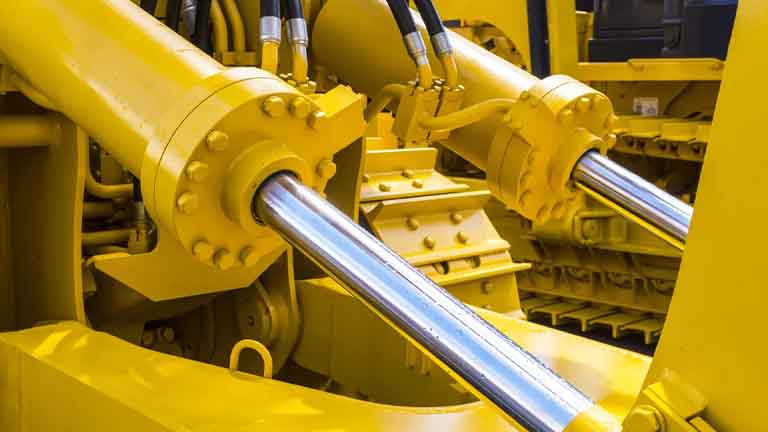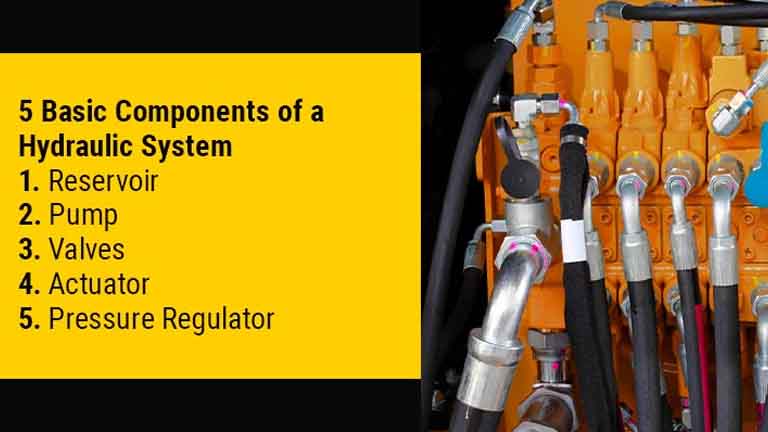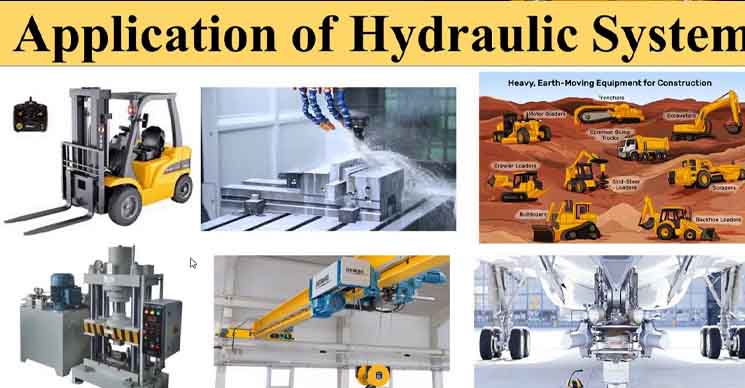![]()
Hydraulics is a fascinating field that plays a vital role in numerous industries, from construction and manufacturing to aerospace and automotive. If you’ve ever wondered how heavy machinery operates or how brakes work in your car, chances are hydraulics are at play.
In this beginner’s guide, we will delve into the world of hydraulics, explaining the fundamental concepts, components, and applications of hydraulic systems.
What are Hydraulic Systems?

Hydraulic systems are power transmission systems that use fluid to generate, control, and transmit force. They rely on the principle of Pascal’s law, which states that when pressure is applied to a confined fluid, it is transmitted equally in all directions. Hydraulic systems consist of essential components such as pumps, cylinders, valves, and fluid reservoirs.
How Does a Hydraulic System Work?
When it comes to hydraulic systems, understanding the fundamental principles and components is key.
In this article, we’ll explore the basics of hydraulic systems, focusing on their functionality, the incompressibility of liquids, force multiplication, and essential components such as reservoirs and hydraulic fluids. Let’s dive in!
Incompressibility: The Key to Hydraulic Systems:
In hydraulic systems, the incompressibility of liquids is crucial. Unlike solids, liquids do not compress or squish when pressure is applied. This principle forms the foundation of hydraulic systems, allowing for the transmission of force and the generation of power.
We’ll explore how this incompressibility is utilized to achieve remarkable results.
Force Multiplication: Harnessing Hydraulic Power:
The ability to multiply force is one of the key advantages of hydraulic systems. We’ll delve into how a simple system with a weighted piston can compress liquid, forcing it through a narrower pipe and generating high-speed movement. This force multiplication enables hydraulic systems to power complex devices and move heavy objects efficiently.
Pascal’s Principle: Understanding the Science Behind Hydraulics:
Blaise Pascal’s contributions to hydraulics in the 17th century laid the groundwork for its understanding. We’ll explore Pascal’s Principle, which states that any pressure applied to a confined fluid transmits equally in all directions. This principle is the basis for the multiplication of force and its transmission through hydraulic systems.
Trade-offs: Balancing Force and Speed:
Hydraulic systems often involve trade-offs between force and speed. We’ll examine how adjusting the speed and force applied to one end of the system affects the results at the other end. Understanding these trade-offs is crucial in optimizing hydraulic systems for specific applications.
Components of Hydraulic Systems:
To control and regulate hydraulic systems, several components play vital roles. We’ll focus on two essential components:
- Reservoir: The reservoir holds the hydraulic fluid, provides cooling, and allows trapped air to escape. We’ll explore the significance of reservoirs in maintaining system efficiency and functionality.
- Hydraulic Fluid: Hydraulic systems rely on specialized fluids with specific properties. We’ll discuss the types of hydraulic fluids, their characteristics, and their importance in lubrication, heat resistance, and viscosity control.
Versatility and Applications of Hydraulic Systems:
Hydraulic systems offer versatility in their applications. From small-scale machinery to heavy industrial equipment, we’ll highlight the wide range of applications where hydraulics excel. We’ll explore how hydraulic systems power cylinders, pumps, presses, lifts, motors, and even automotive components like brakes.
Working Principles of Hydraulic Systems

Understanding the working principles of hydraulic systems is crucial to grasp how they convert fluid power into mechanical power.
We will explain how hydraulic pumps generate pressure, how valves control the flow of fluid, and how cylinders convert hydraulic energy into linear motion. With clear illustrations and practical examples, you’ll gain a solid understanding of these principles.
Components of Hydraulic Systems

We will take an in-depth look at the key components of hydraulic systems, including pumps, cylinders, valves, and fluid reservoirs. Each component has a specific role and contributes to the overall functioning of the system. We’ll explore different types of pumps, such as gear pumps and piston pumps, and discuss the various types of valves used in hydraulic systems.
Applications of Hydraulic Systems:

Hydraulic systems find applications in a wide range of industries. We will explore some common applications, such as hydraulic excavators, hydraulic presses, hydraulic brakes, and hydraulic lifts. Understanding these practical applications will help you see how hydraulic systems are used to perform heavy lifting, precise control, and power transmission in various contexts.
Maintenance and Troubleshooting
Like any mechanical system, hydraulic systems require proper maintenance to ensure optimal performance and longevity. We will provide essential tips for maintaining hydraulic systems, including fluid checks, filter replacements, and seal inspections. Additionally, we will discuss common issues and troubleshooting techniques to help you identify and rectify problems in hydraulic systems.
Advancements in Hydraulic Technology
The field of hydraulics is constantly evolving, with advancements in technology driving innovation. We will touch upon some exciting developments in hydraulic systems, such as electro-hydraulic systems, smart hydraulic systems, and energy-efficient designs.
By exploring these advancements, you’ll gain insight into the future of hydraulic technology.
Conclusion
Hydraulics is a powerful and versatile technology that plays a crucial role in many industries. By understanding the fundamental concepts, components, and applications of hydraulic systems, you can appreciate their significance and potential.
Whether you’re a student, an aspiring engineer, or simply curious about the workings of hydraulic systems, this beginner’s guide has provided you with a solid foundation to explore the world of hydraulics further.

